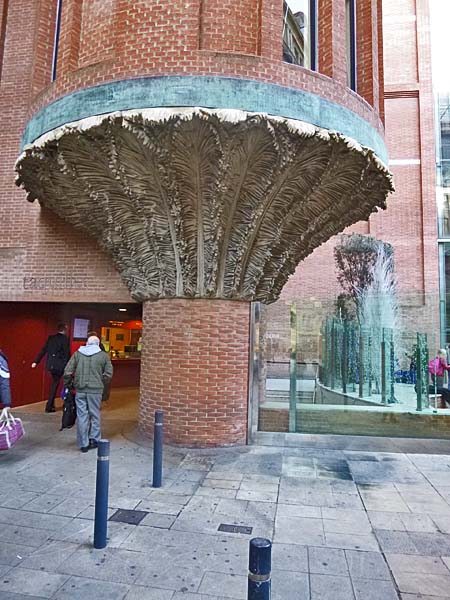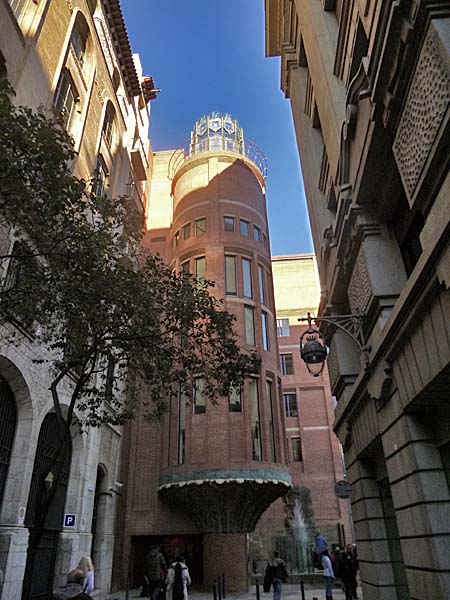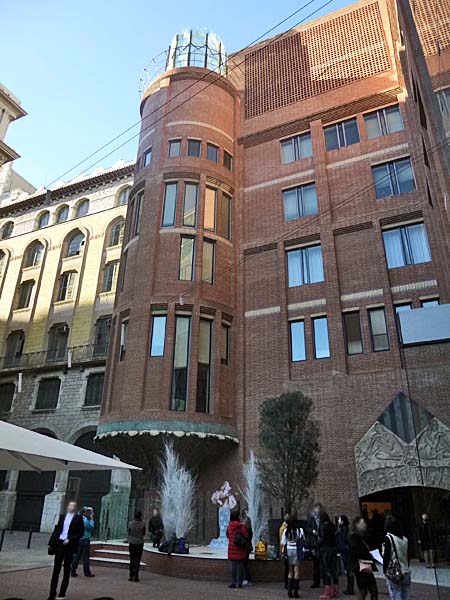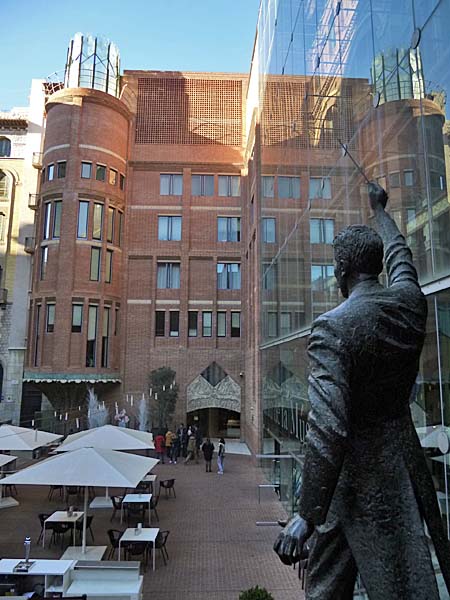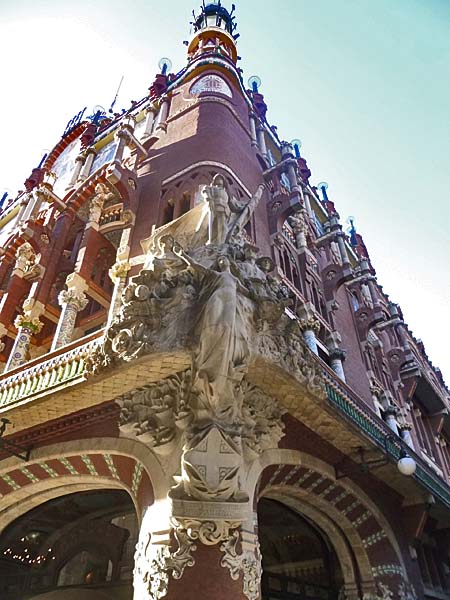Barcelona's magnificent
art nouveau Palau de Musica is tucked away
down one of the many narrow lanes in the old
part of the city. The confined space
makes it difficult to step back and
appreciate the ornate nature of this
building, let alone photograph it. The
concert hall describes itself as, "...
an architectural jewel of Catalan Art
Nouveau, the only concert venue in this
style to be listed as a World
Heritage Site by UNESCO (4th
December 1997), which today represents
an essential landmark in the cultural
and social life of Catalonia.
The building is designed around a
central metal structure covered in
glass, which exploits natural light to
make Domènech i Montaner's masterpiece
into a magical music box which brings
together all the decorative arts:
sculpture, mosaic, stained glass and
ironwork."
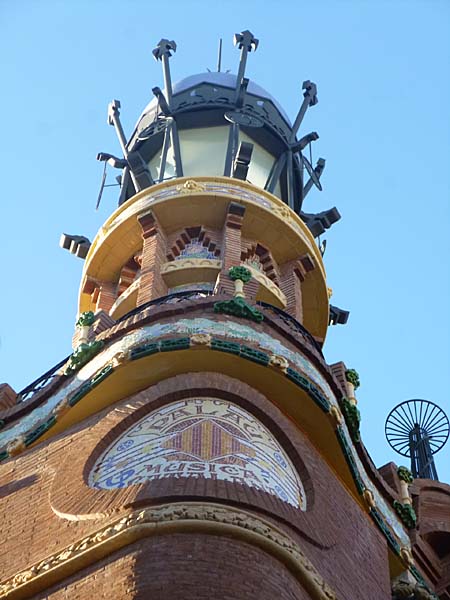
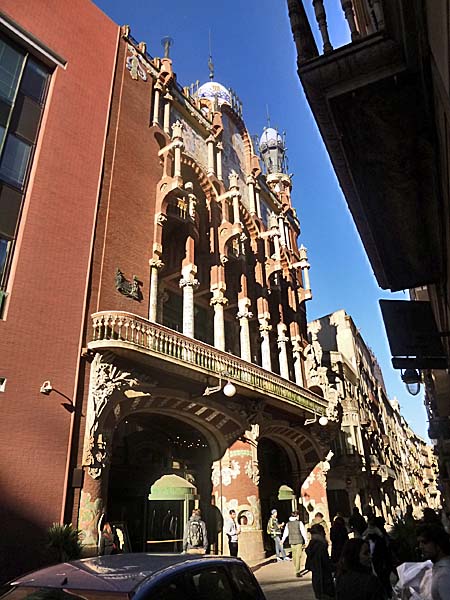
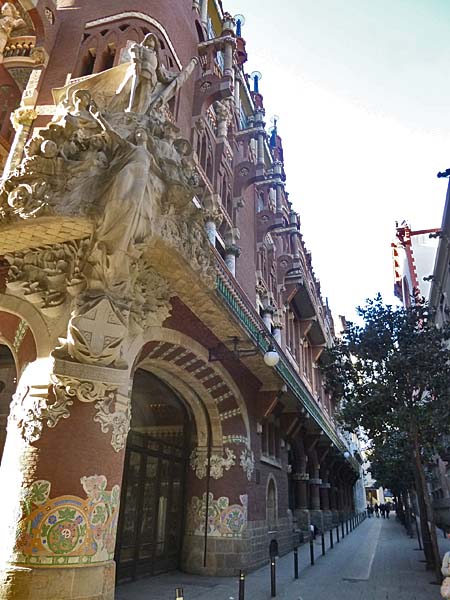
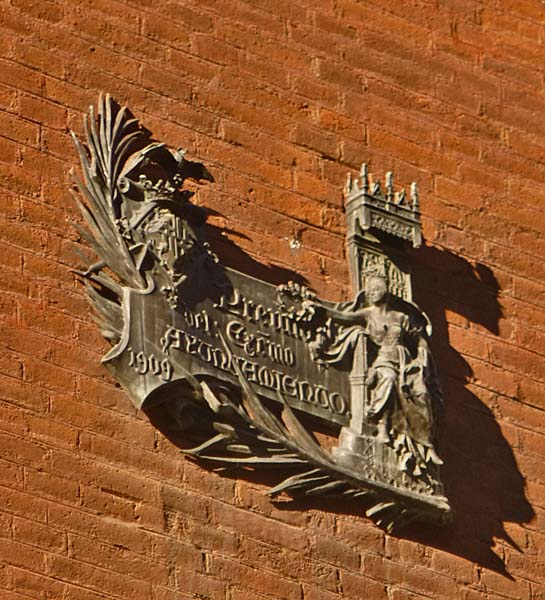
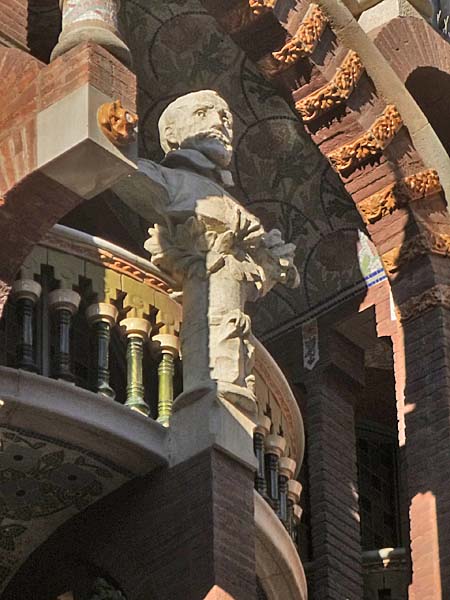
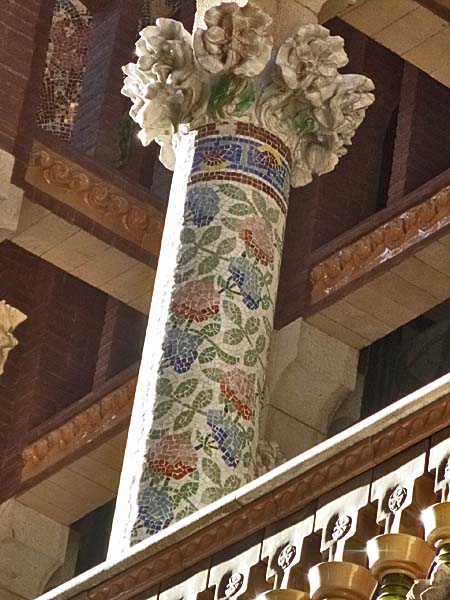
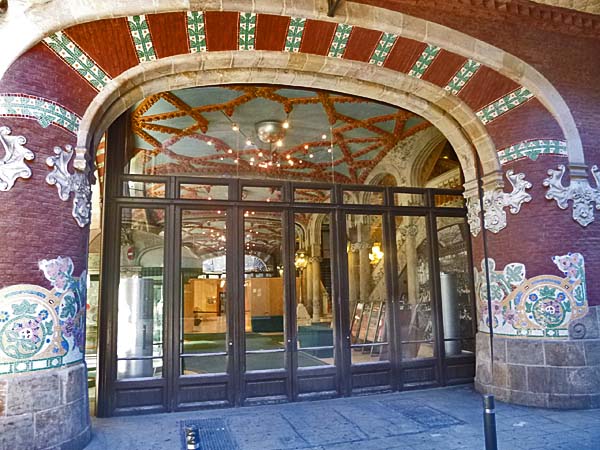
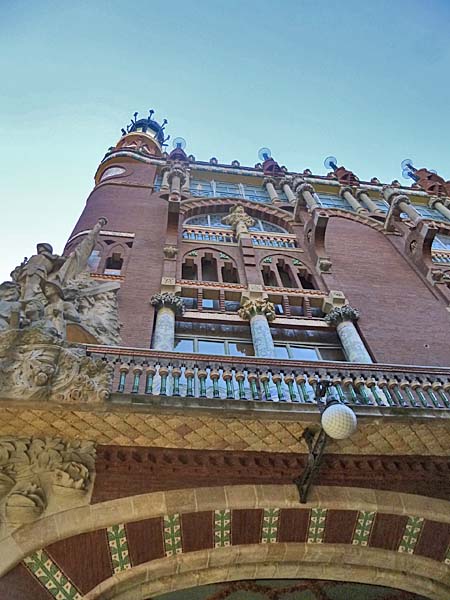
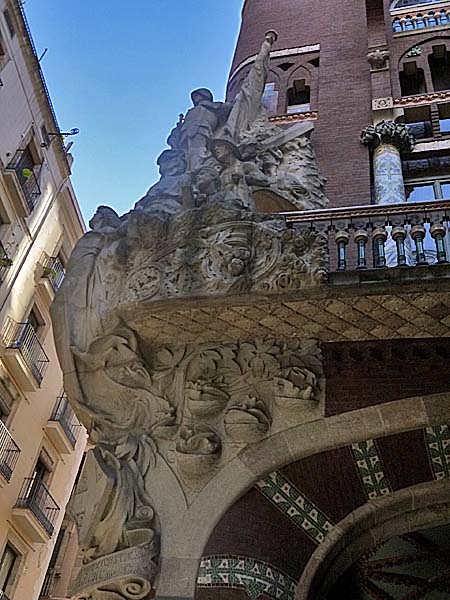
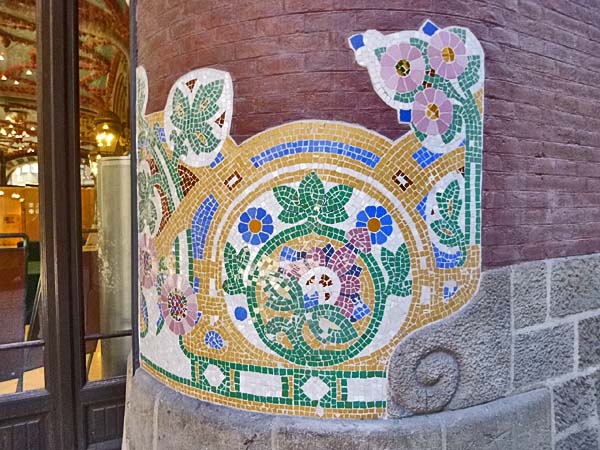
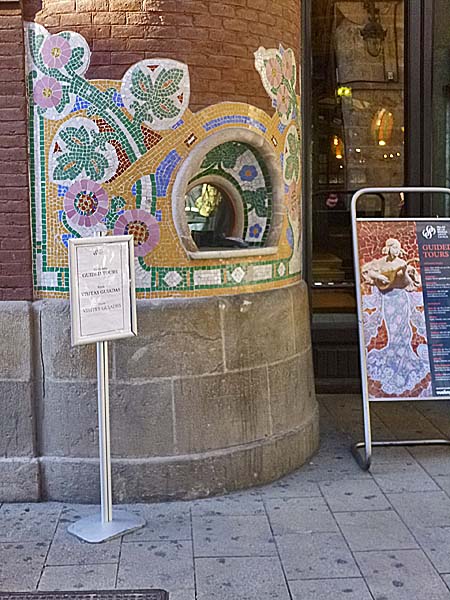
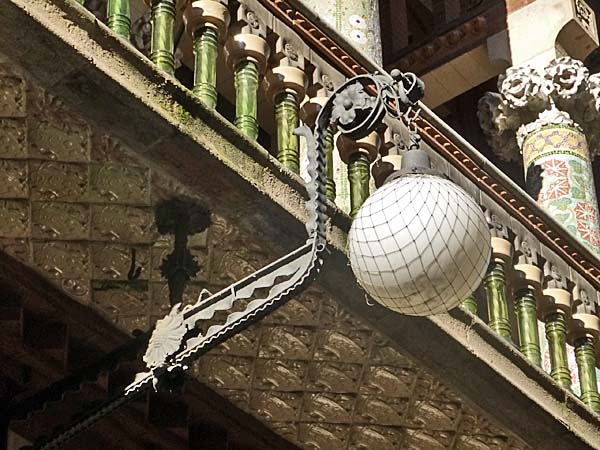 - Inside -
- Inside -
"... the Foyer of
the Palau, which has room for a large
number of people, even seated at tables,
both when there are performances and
when it is used as a separate
restaurant-cafeteria. The wide arches
built with bricks and green and
floral-pattern glazed ceramics give this
area a distinctive air of its very own."
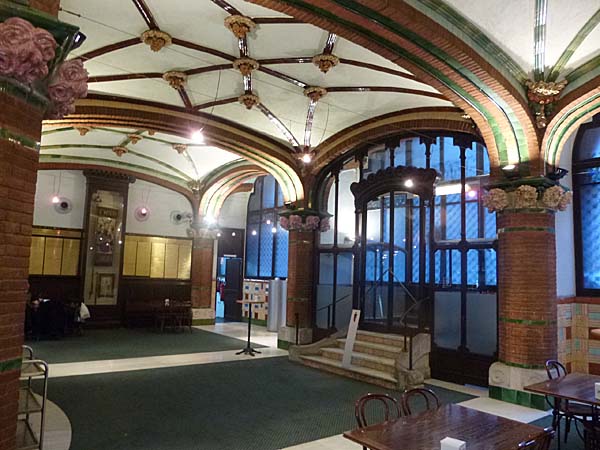
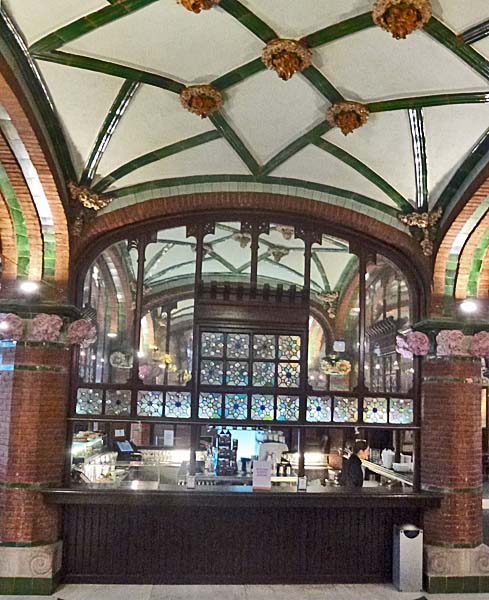
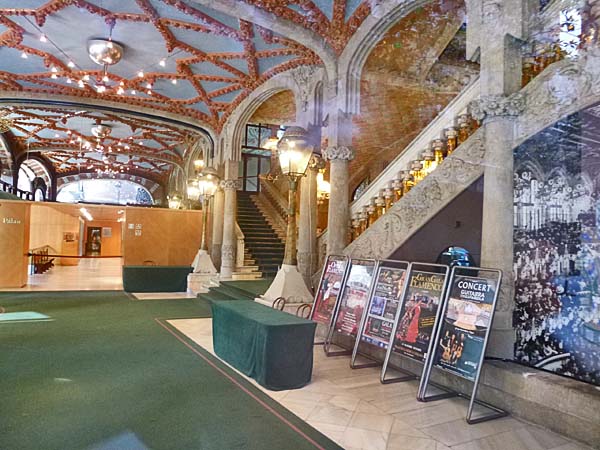
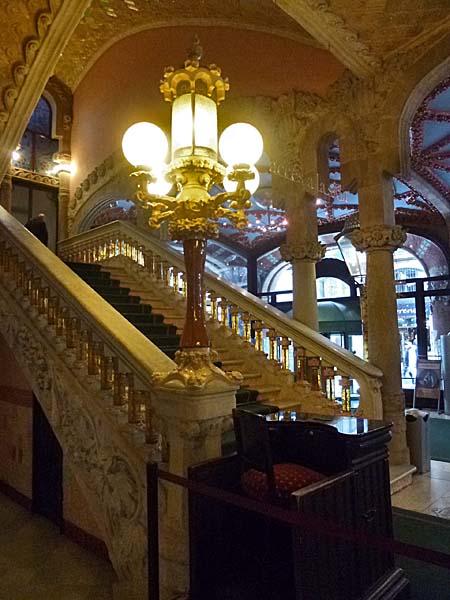
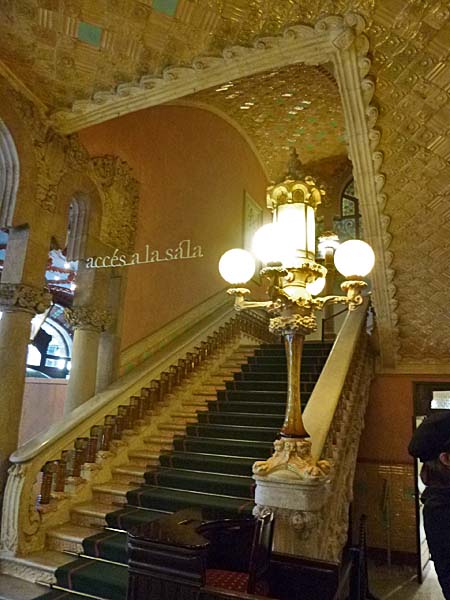
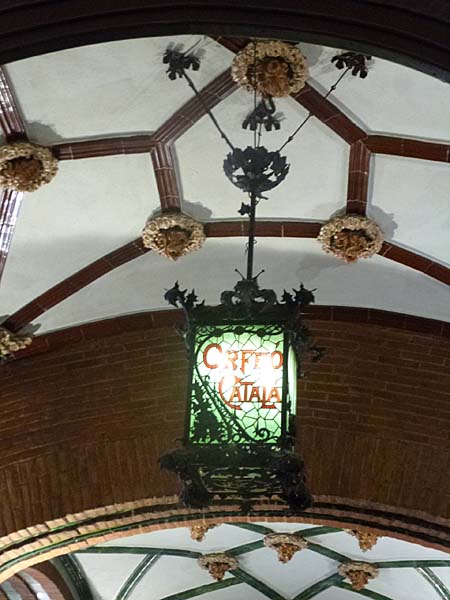
"The Concert
Auditorium – one of the most distinctive
in the world – (has been) for more than
hundred years the privileged setting for
the musical life, both national and
international, of the city of Barcelona.
... Dominated by the organ over the
stage ......
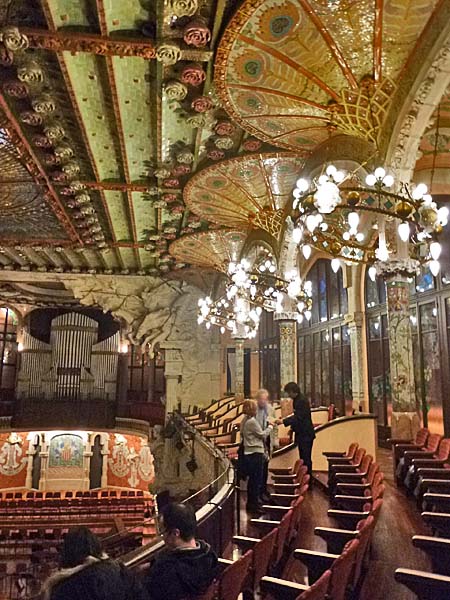
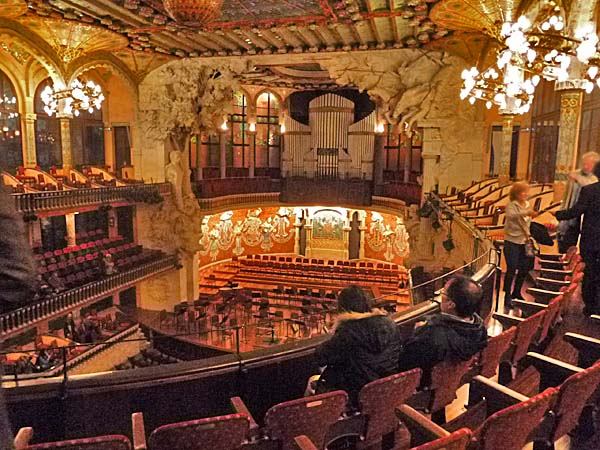 .... and with a central skylight
portraying the sun, the auditorium is
filled with natural light. .....
.... and with a central skylight
portraying the sun, the auditorium is
filled with natural light. .....
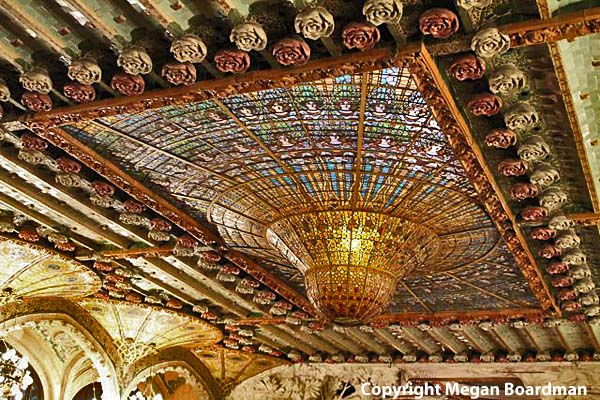
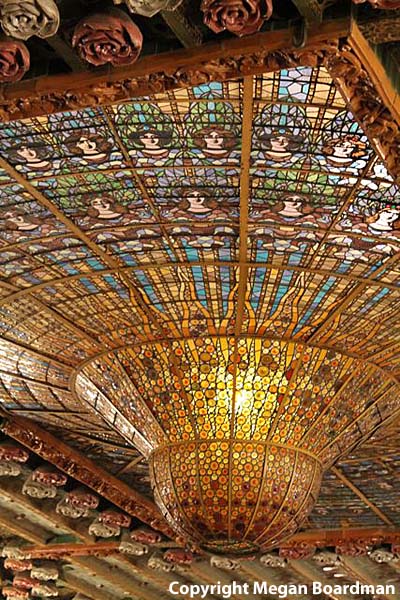
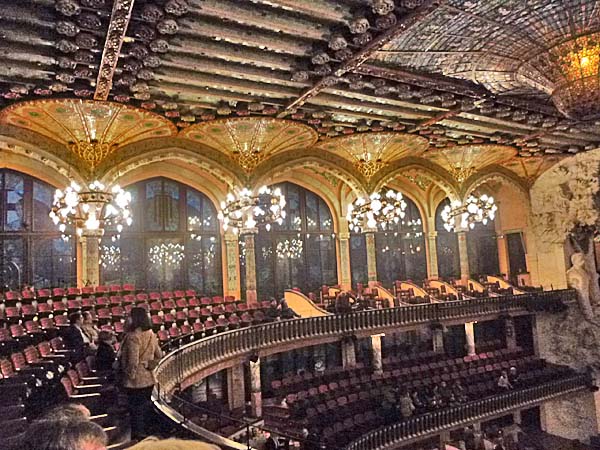
... A mystical,
paradoxical hall, packed with figures
like the muses which surround the stage,
a bust of Anselm Clavé on one side and
Beethoven on the other, and hundreds of
natural motifs, including flowers,
palms, fruit, jars and cases filled with
jewels."
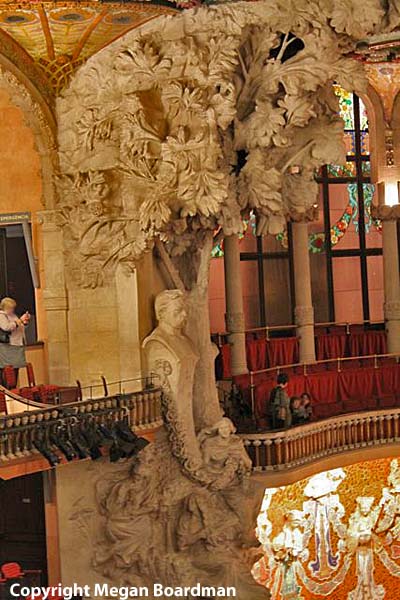
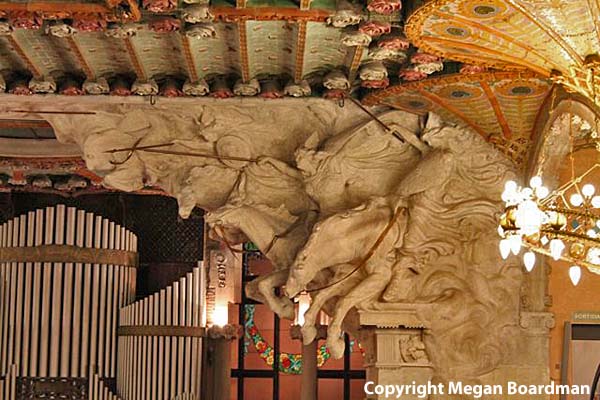
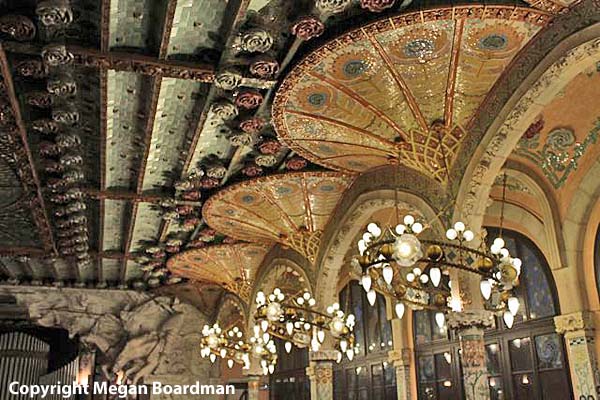
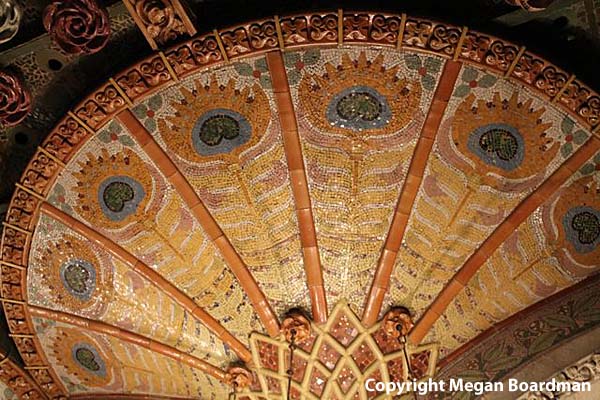
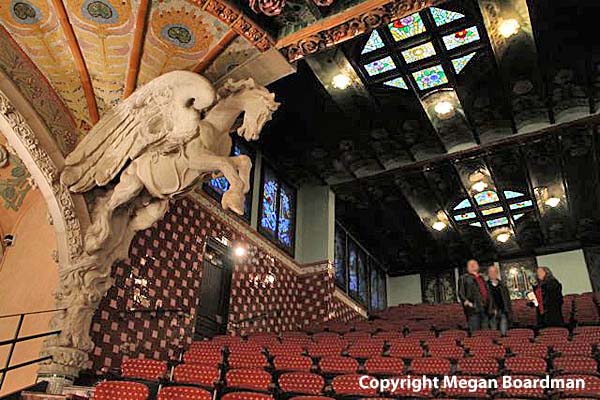
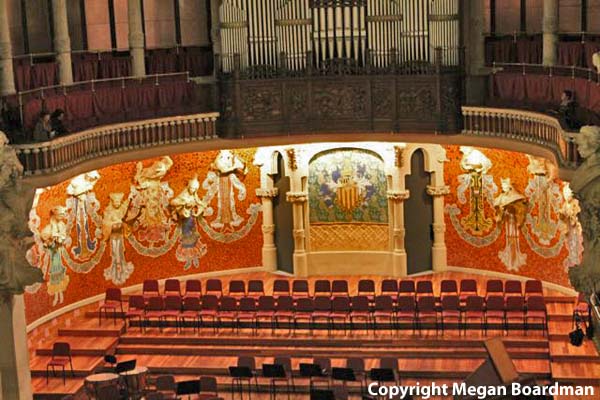
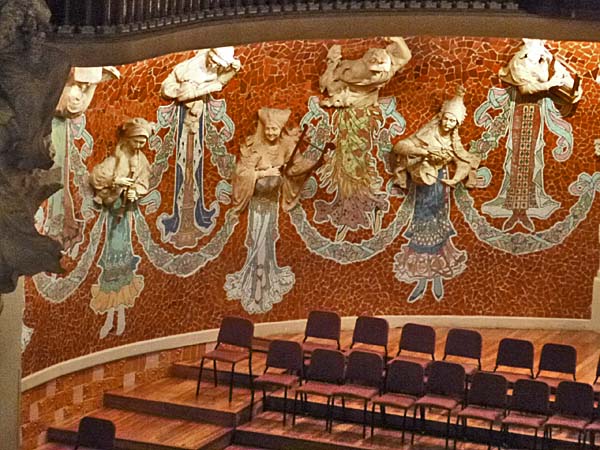 - Petit Palau -
- Petit Palau -
In more recent times the
original Palau has been extended, adding two
other venues and creating a courtyard where
people gather. Beside the old building
is the Petit Palau, "... a modern
auditorium opened in 2004, ideal for
chamber music or small-format concerts
and offering excellent acoustics and
high-tech audio-visual equipment."
The facade of the building features a
three-dimensional sculptural form rising
from the street to the top of its tower.
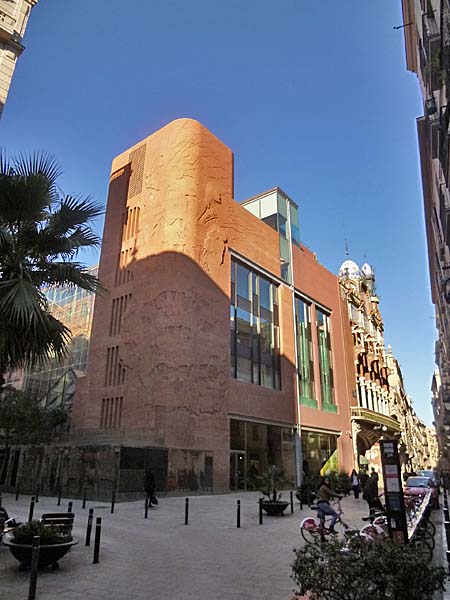
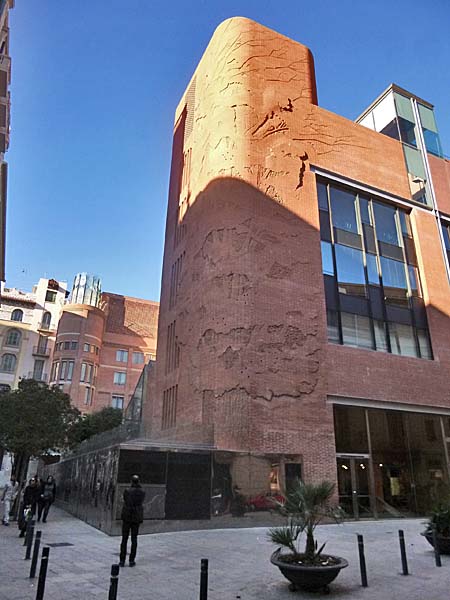
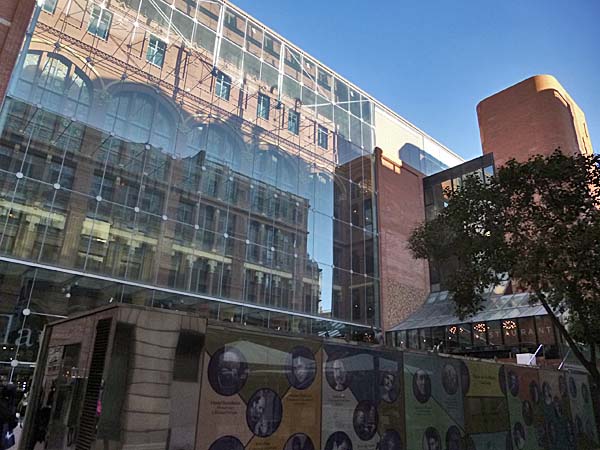
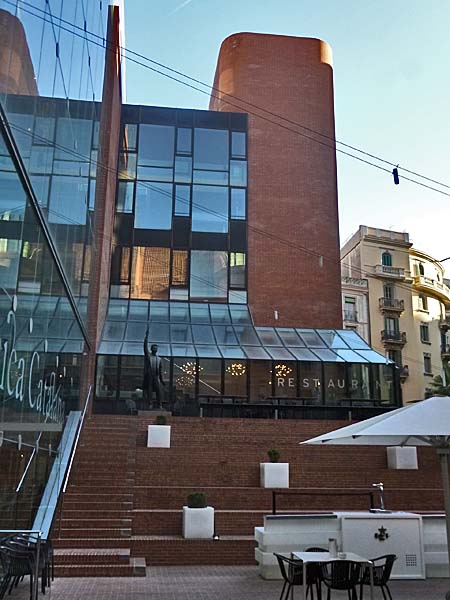
"The last venue is
the little gem of the Palau de la
Música, the Sala d'Assaig de l'Orfeó
Català, the Orfeó Català Rehearsal Room.
A cosy, intimate venue for small-format
concerts, talks, presentations - and, of
course, where the Orfeó Català choirs
practise."

